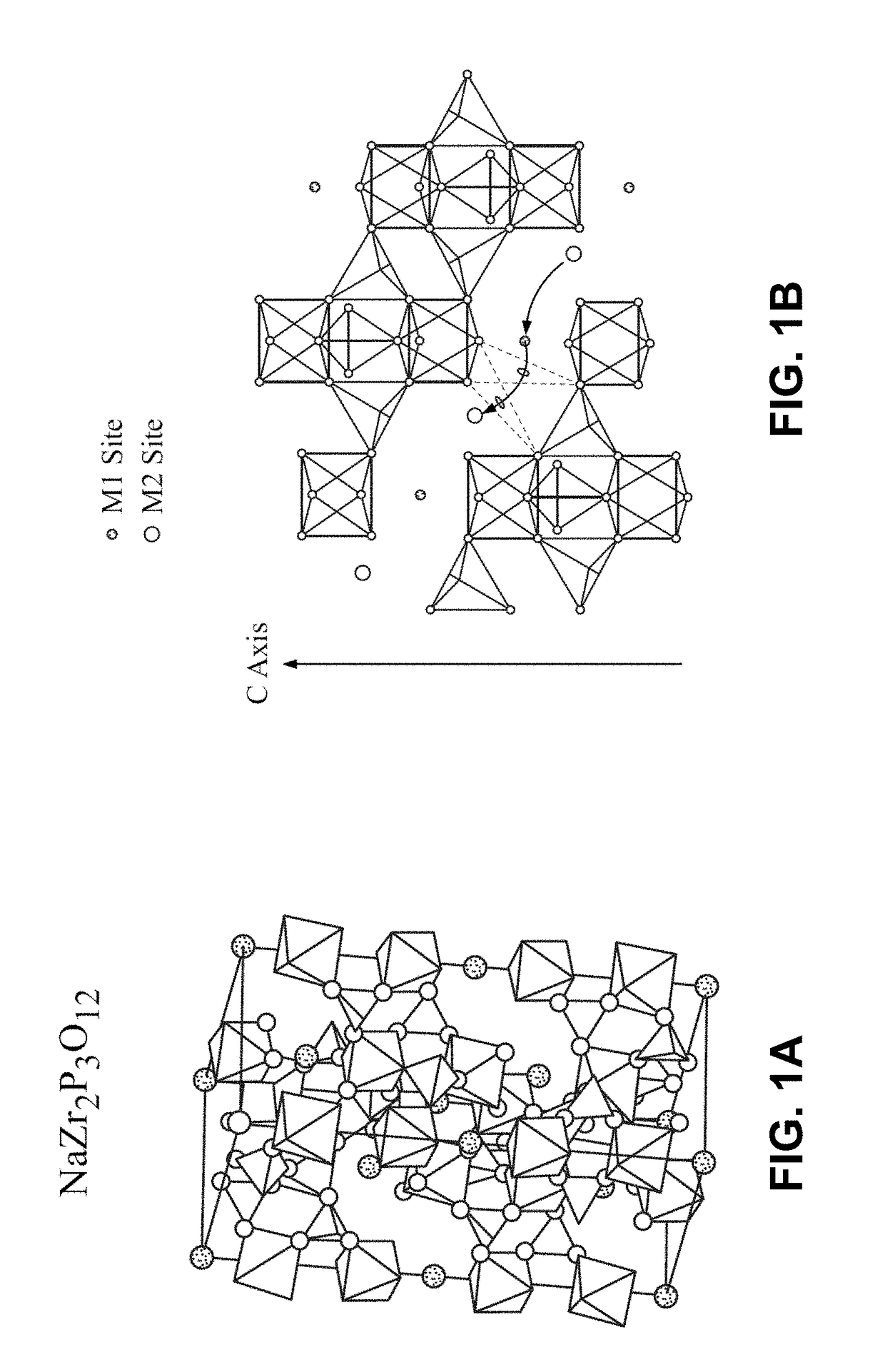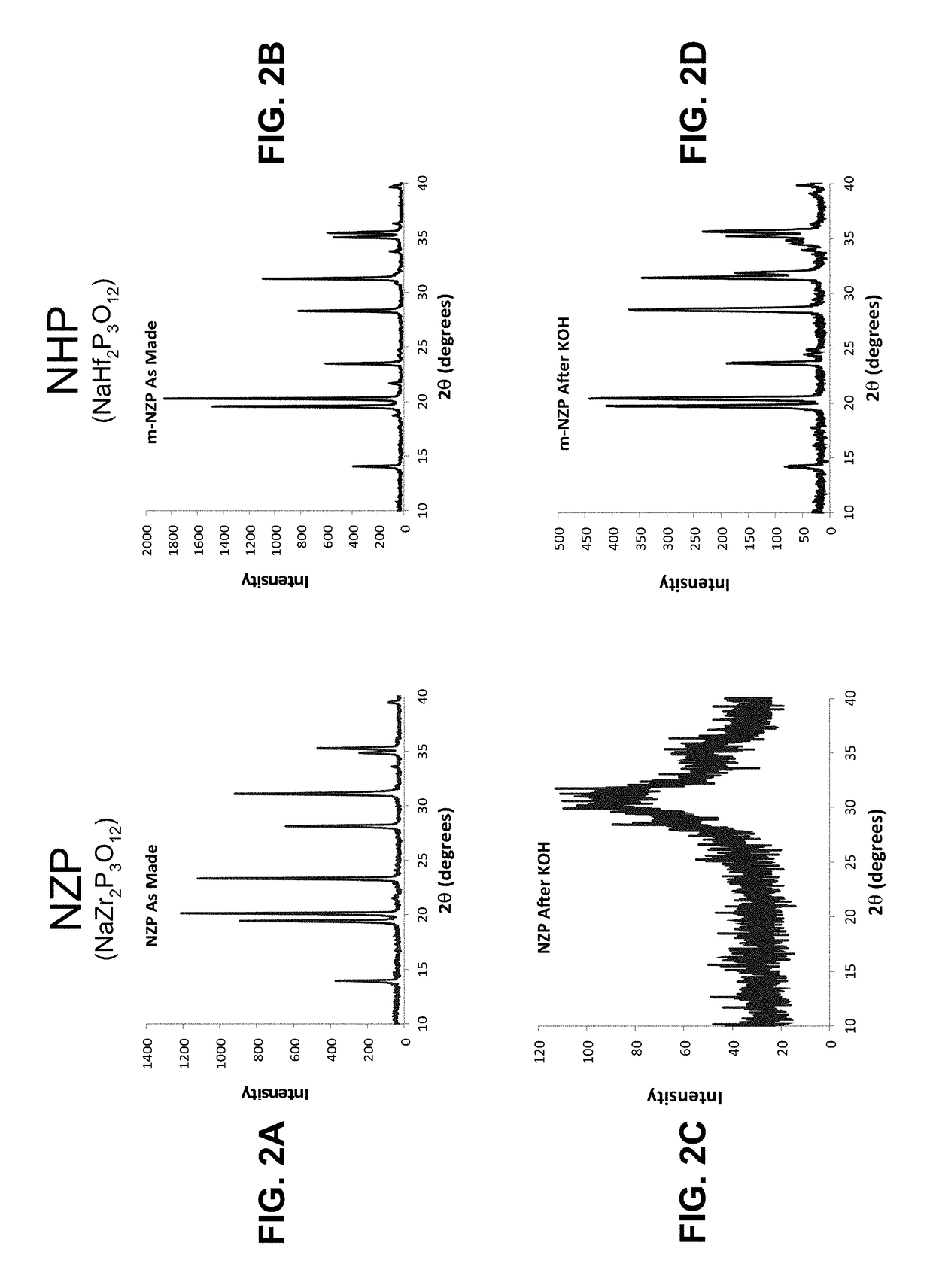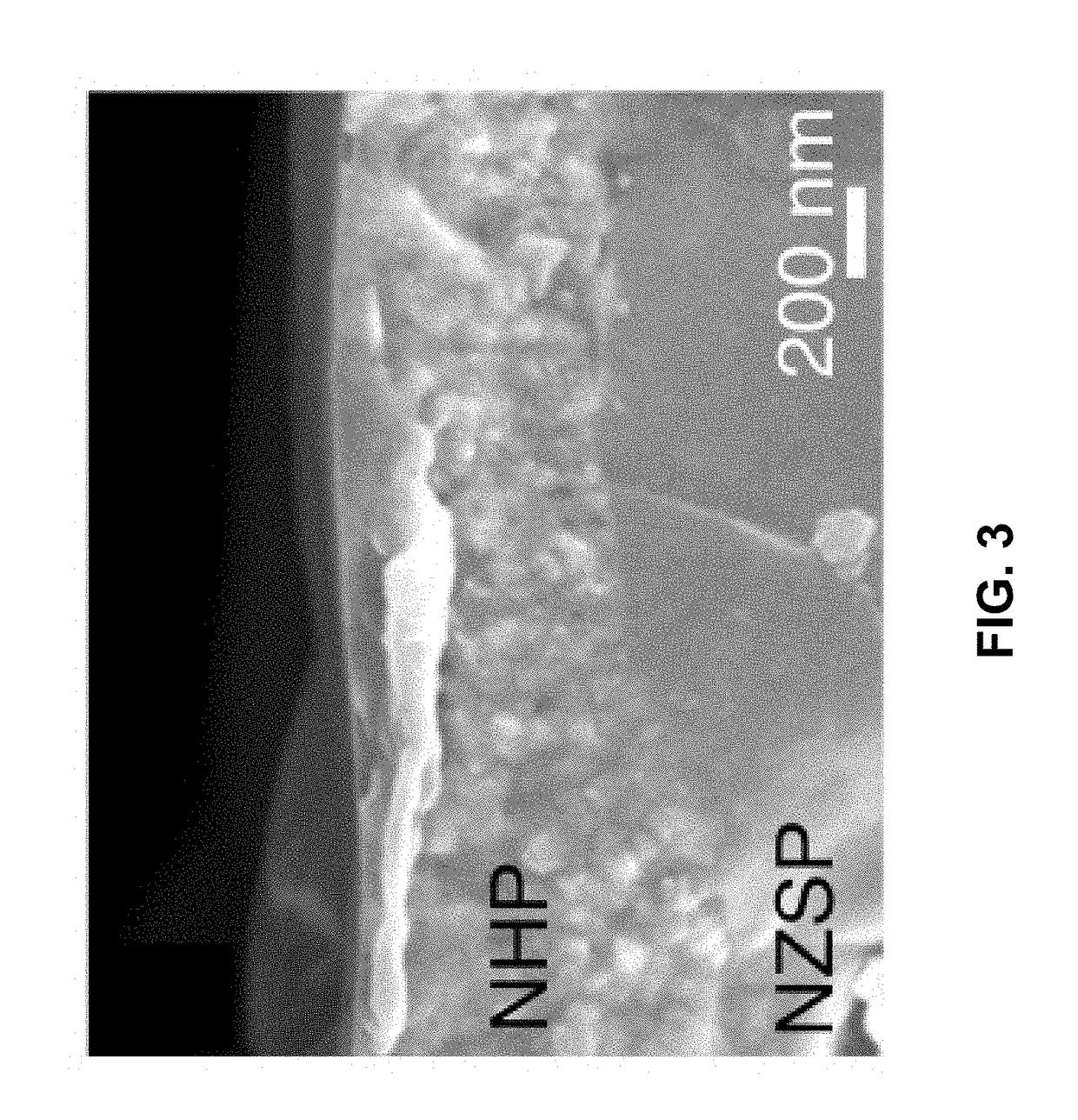Cation-enhanced chemical stability of ion-conducting zirconium-based ceramics
- Summary
- Abstract
- Description
- Claims
- Application Information
AI Technical Summary
Benefits of technology
Problems solved by technology
Method used
Image
Examples
Embodiment Construction
[0014]The present invention is directed to materials that modify the chemical stability of zirconium-based ceramics through cation substitutions for the zirconium ions. For example, cations can be substituted for Zr in the sodium-ion conductor, NaSICON. The term NaSICON (Na Super Ion CONductor) commonly refers to the ion-conducting ceramic Na1+xZr2P3−xSixO12. As shown in FIG. 1A, these materials form a rigid hexagonal framework of corner-linked ZrO6 octahedra and PO4 or SiO4 tetrahedra and containing so-called M1 and M2 interstitial positions which are typically filled with alkali cations, such as sodium. See M. Cretin et al., Sensors and Actuators B 43, 224 (1997). As shown in FIG. 1B, the conduction of alkali cations through NaSICON-type materials is based on the movement of the ion from site to site through the crystal lattice via channels (bottlenecks) constricted by zirconia octahedra and phosphate or silica tetrahedra. As a result, ion conductivity through this matrix depends ...
PUM
| Property | Measurement | Unit |
|---|---|---|
| Electrical conductor | aaaaa | aaaaa |
| Chemical stability | aaaaa | aaaaa |
Abstract
Description
Claims
Application Information
 Login to View More
Login to View More - R&D
- Intellectual Property
- Life Sciences
- Materials
- Tech Scout
- Unparalleled Data Quality
- Higher Quality Content
- 60% Fewer Hallucinations
Browse by: Latest US Patents, China's latest patents, Technical Efficacy Thesaurus, Application Domain, Technology Topic, Popular Technical Reports.
© 2025 PatSnap. All rights reserved.Legal|Privacy policy|Modern Slavery Act Transparency Statement|Sitemap|About US| Contact US: help@patsnap.com



